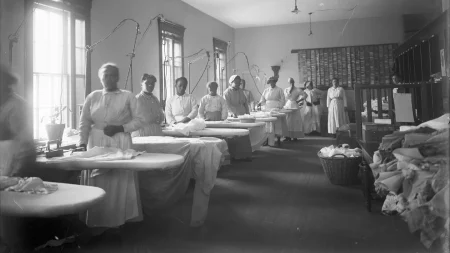The Concerning Shift in U.S. Childhood Vaccination Policy
In September 2023, a fundamental change occurred in America’s approach to childhood immunization that has alarmed medical experts across the country. The Advisory Committee on Immunization Practices (ACIP), which establishes national vaccine recommendations, voted to eliminate the combination vaccine option for measles, mumps, rubella, and varicella (MMRV) as a first dose for children aged 12-15 months. While this may appear to be a minor adjustment, it represents what many health professionals fear is the beginning of a troubling dismantling of one of America’s greatest public health achievements.
The shift occurred following significant changes in leadership at the Department of Health and Human Services under President Trump, who appointed Robert F. Kennedy Jr., a well-known vaccine skeptic, to head the department. Kennedy promptly removed established vaccine experts from ACIP and replaced them with individuals who share anti-vaccine views but possess limited expertise in immunology or public health. The September meeting marked a stark departure from the committee’s long-standing commitment to evidence-based decision-making. Their justification for removing the combination vaccine option centered on a slightly increased risk of febrile seizures—a rare and typically harmless side effect that was already well-documented and accounted for in previous guidelines that allowed parents to choose between combination or separate vaccines after being informed of the risks.
This vaccination schedule, developed over decades beginning in the mid-1960s, has been an extraordinary success story for American public health. Today, it protects people against nearly 20 diseases including polio, tetanus, hepatitis B, measles, and even prevents certain cancers of the cervix and liver. According to CDC estimates, among individuals born between 1994 and 2023, childhood immunizations will have prevented approximately 508 million illnesses and saved over 1 million lives. The committee’s previous science-driven approach responded appropriately to health challenges—when measles outbreaks occurred in 1989, ACIP recommended adding a second dose of the MMR vaccine based on careful research and evidence.
The recent changes threaten to undermine this progress on multiple fronts. Beyond the MMRV decision, the committee has discussed delaying the birth dose of the hepatitis B vaccine without new evidence supporting such a change. Administration officials have subsequently questioned the safety of the MMR vaccine itself—a vaccine with more than 50 years of proven safety and efficacy. They’ve suggested separating it into three shots, despite the fact that single vaccines are no longer available in the United States. This approach contradicts established immunological understanding; combination vaccines actually improve completion and timing of vaccination series, require fewer needle sticks for children, and reduce the number of doctor’s visits needed for full protection.
These policy shifts create immediate practical problems for vaccine access across America. While health insurance companies have announced they will continue covering vaccines recommended before September 2025 until the end of 2026, the federal Vaccines for Children (VFC) program—which provides free vaccines to approximately half of U.S. children, including those on Medicaid, the uninsured, and American Indian and Alaska Native youth—must follow current ACIP recommendations. With the September vote, ACIP has already eliminated a vaccine choice for tens of millions of children. If additional changes follow, the country risks creating a dangerous divide in vaccine access that will particularly harm the most vulnerable children.
Public health experts warn that these changes will inevitably lead to outbreaks of preventable diseases. Measles, which is highly contagious, requires approximately 95% vaccination coverage to prevent community spread. The first outbreak of 2025 began in a Texas county where kindergarten MMR vaccination rates had fallen to just 82%. Similarly, any changes to the hepatitis B birth dose would likely have severe consequences—before universal infant vaccination began in 1991, around 18,000 cases occurred annually, compared to just 2,200 in 2023. Infancy represents the most dangerous time for hepatitis B infection, with 90% of infected infants developing chronic disease that can cause liver damage and increase cancer risk.
Despite these concerning developments, there remains hope. Medical societies like the American Academy of Pediatrics continue to provide evidence-based vaccine guidance, and public opinion still strongly favors childhood vaccination, with approximately 90% of parents supporting MMR and polio vaccines. As pediatric infectious disease specialist Dr. Flor Muñoz notes, “The growth and ability of children to thrive in all aspects of their lives has been supported in great part through prevention of infectious diseases.” The challenge now is preserving this remarkable achievement against political interference that threatens to return us to an era when preventable diseases regularly hospitalized and killed American children.















